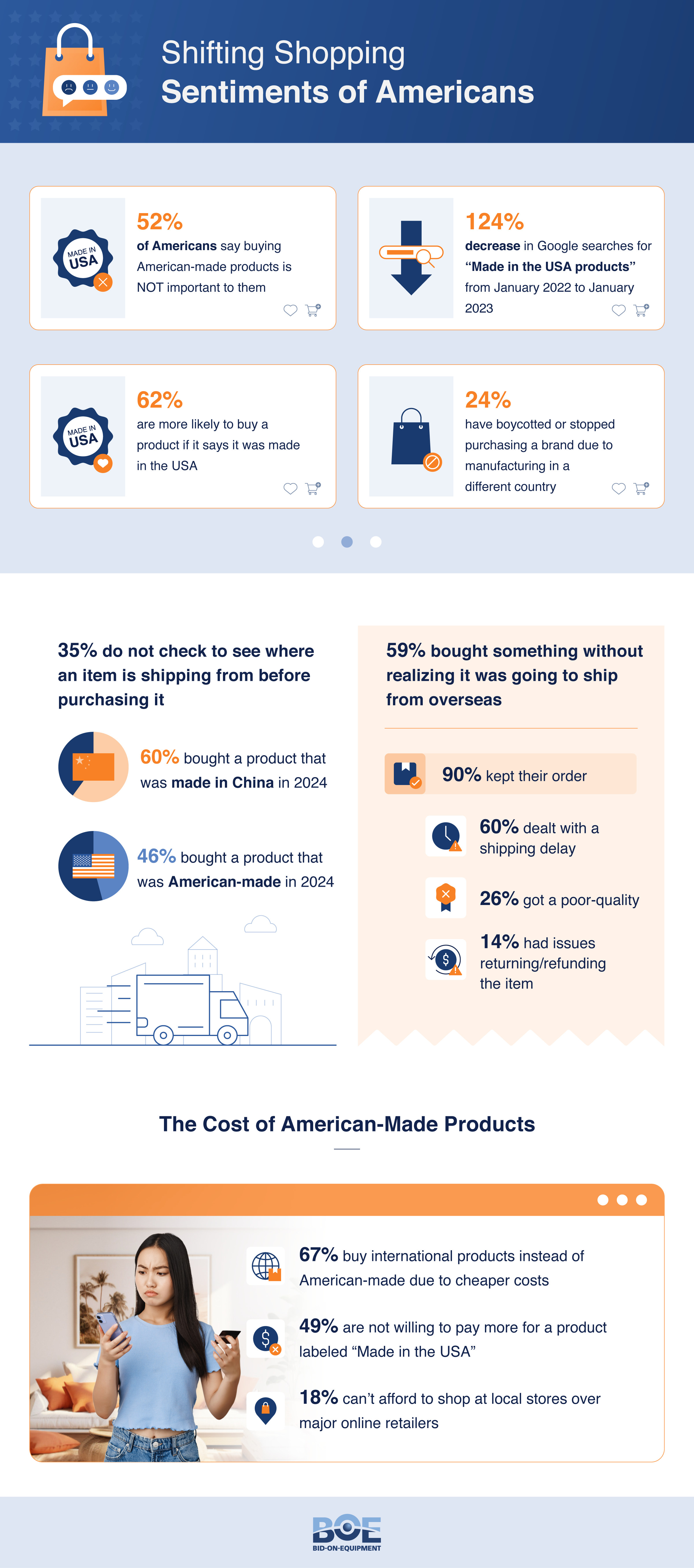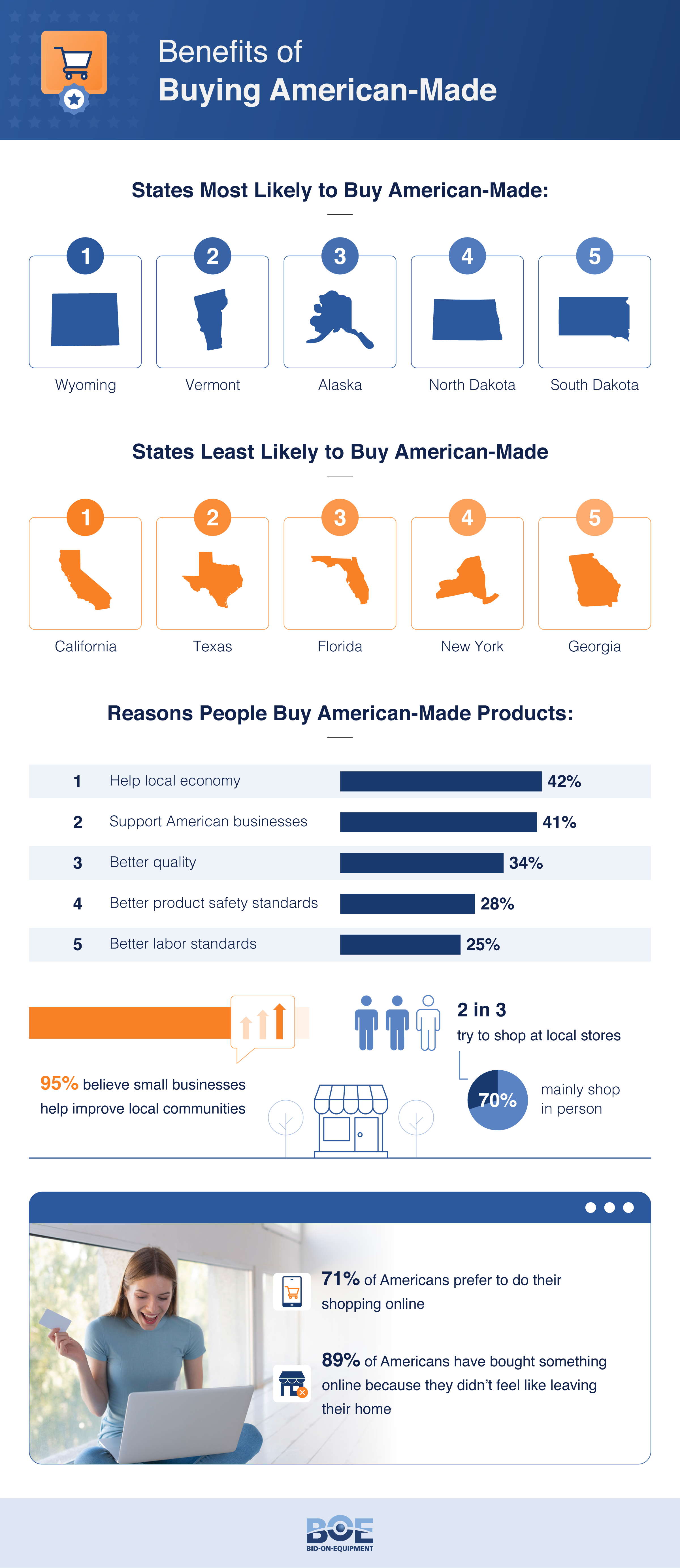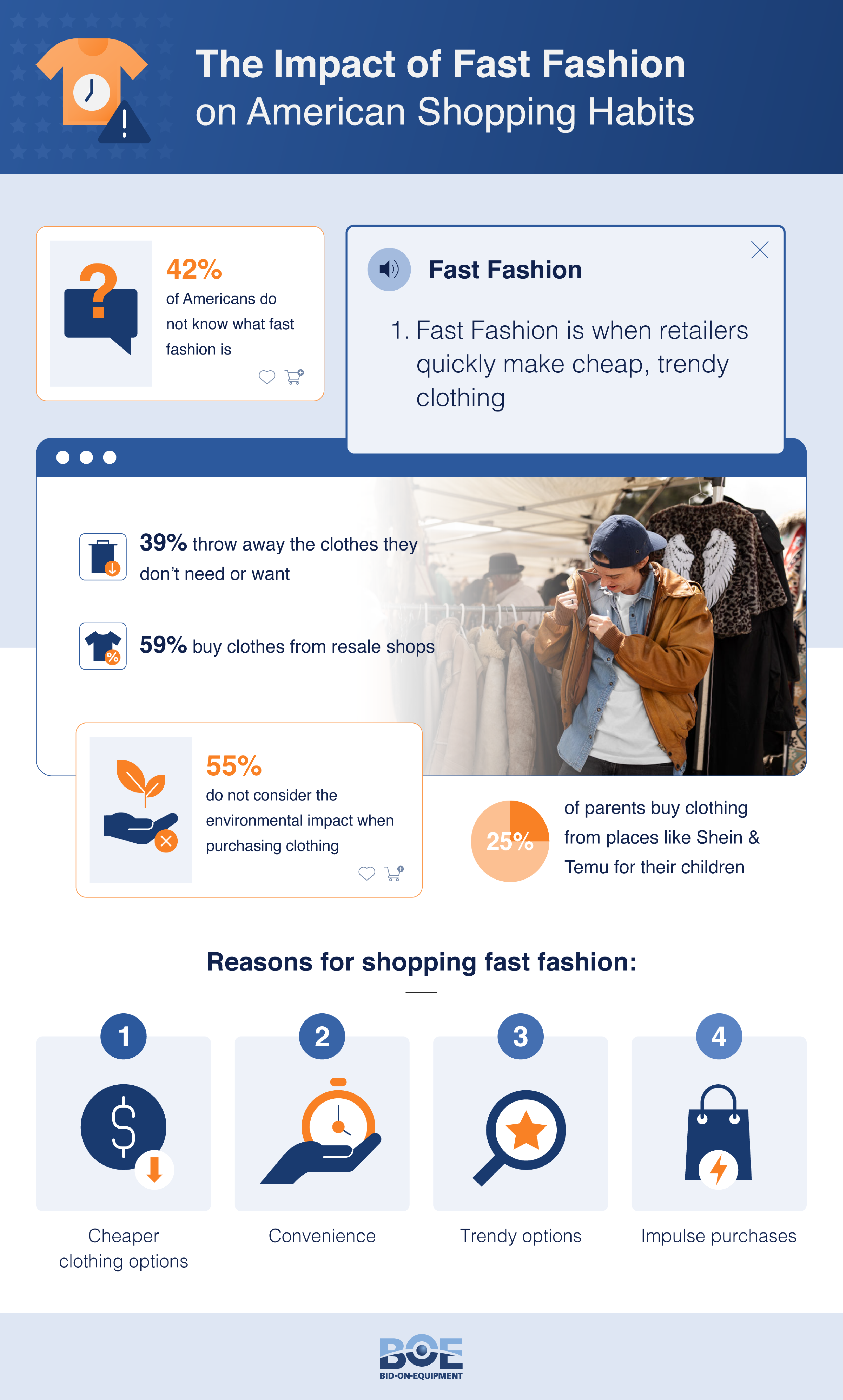Shopping is instantaneous. Looking for a new water bottle? How about a shirt? Shopping for a new microwave? It can take less than a minute to pull out your phone, open an app, order one, and all there is to do is wait. It will be delivered in 48 hours– or maybe even the same day.
But how intentional are Americans being when it comes to their shopping purchases and where they are coming from? In a new survey, we asked Americans about their shopping habits and if shopping for locally-made goods is essential. Turns out, 52% of Americans say buying American-made products is not important.
Table of Contents:
Higher Cost of American-Made Goods Deters Shoppers

There are many benefits when it comes to American-made products , but price is rarely one of them due to higher labor costs and standards. More than 2 in 3 Americans buy international products over American-made ones because of cheaper costs, and 49% aren’t willing to pay more for a product labeled “Made in the USA”.
There is a difference between an American-made product and a “Made in the USA” one. According to the Federal Trade Commission, any product labeled as “Made in the USA” must be 100% or almost fully made in the U.S. That includes everything from the parts necessary to make the product, processing, and the labor needed to put it together. If companies sell products that don’t adhere to these rules they could face massive fines.
The “Made in the USA” label does carry a lot of weight for shoppers. Over 3 in 5 (62%) are more likely to buy a product if it says it was “Made in the USA.” But shoppers don’t appear to be actively searching for the label while making a purchase. Searches for “Made in the USA products” dropped 124% from January 2022 to January 2023.
More than 1 in 3 (35%) do not check to see where an item is shipping from before purchasing it. In fact, 59% have bought something without realizing it was going to ship from overseas. After making the discovery, 90% kept their order, but it wasn’t without issues for some. 60% dealt with a shipping delay, 26% got a poor-quality item, and 14% had issues returning or refunding the product.
Top 5 Reasons People Buy American-Made Products

The top five reasons people buy American-made products are:
- Help local economy
- Support American businesses
- Better quality
- Better product safety standards
- Better labor standards
States Most & Least Likely to Purchase American-Made
Many people turn to Google when looking for American-made products. To determine which states are most and least likely to make these purchases we examined hundreds of Google searches for American-made goods.
The states most likely to buy something American-made are:
- Wyoming
- Vermont
- Alaska
- North Dakota
- South Dakota
Meanwhile, some of the most populous states are searching the least for these types of products. California is least likely to buy American-made followed by Texas and Florida.
At the end of the day, 95% believe small businesses help improve local communities, and 2 in 3 try to shop at local stores. The main way people shop at local businesses is in person, which is hard since 71% of Americans prefer to do their shopping online.
The main reason Americans often end up shopping at major retailers such as Amazon is convenience. Nearly 9 in 10 (89%) admitted they have bought something online because they didn’t feel like leaving their home. Other reasons Americans shop at major retailers include free shipping and lower cost. 1 in 6 (18%) Americans simply can’t afford to shop at local stores over these lower-priced options.
The Impact of Fast Fashion

The ability to buy cheap goods and receive products so quickly has fueled “throwaway culture,” which is when people get rid of things incredibly fast, sometimes after only using them one time! A huge aspect of this culture is fast fashion: cheap, trendy clothing that often does not last long. Fast fashion manufacturing often takes place in countries outside of the U.S. where workers are not paid well for the work they’re doing and complete the work in bad or even dangerous conditions like sweatshops.
Despite this, 42% of Americans do not know what fast fashion is. After learning what it is, Americans shared the main reasons they shop for fast fashion are because of its cheap cost and convenience. Over 1 in 2 (55%) do not consider their environmental impact when purchasing clothing, and nearly 2 in 5 (39%) throw away clothes they don’t need or want anymore.
Higher quality fashion comes with a price, but its lifespan and lower environmental impact are tradeoffs to consider. Outside of the environment, there are several reasons to shop American-made if you can afford to do so. By supporting small businesses, your money goes straight back to the communities where these businesses are located. Whether you look specifically for American-made goods or not, we hope that the next time you shop you take a little extra time to research who’s manufacturing your product and where it’s coming from.
Methodology
In January 2024, we surveyed 950 Americans about their shopping habits. Ages ranged from 18 to 78 with an average age of 43. 50% were women, 47% were men, 2% were nonbinary, and 1% declined to answer. 26% were Gen Z, 29% were Millennials, 25% were Gen X, and 20% were Baby Boomers.
To determine the states most and least likely to buy American-made products, we also analyzed Google search volume of 815 terms related to these types of products such as “Made in the USA products,” “American made clothing for sale,” and “best American made cookware” over the period of December 2021 to December 2023.
For media inquiries, please contact media@digitalthirdcoast.net.
Fair Use:
When using this data and research, please attribute by linking to this study and citing Bid-on-Equipment.com.